Octacalcium Phosphate/Calcium Citrate/Methacrylated Gelatin Composites: Optimization of Photo-Crosslinking Conditions and Osteogenic Potential Evaluation
Abstract
1. Introduction
2. Results
2.1. Influence of Photoinitiator Volumetric Ratio and Blue Light Exposure Time on Crosslinking of 35% OCP/35% CC/30% GelMA
2.2. Assessment of Initial Structural Stability of the 35% OCP/35% CC/30% GelMA Composite After Soaking in SBF and Ultrapure Water
2.3. Conversion of 35% OCP/35% CC/30% GelMA and 35% OCP/35% CC/30% Pig Gel Immersed in Simulated Body Fluid
2.4. Comparison of Functional Groups in GelMA and Pig Gel After Crosslinking
3. Discussion
4. Materials and Methods
4.1. Synthesis of the 35% OCP/35% CC/30% GelMA Composite, 35% OCP/35% CC/30% Pig Gel Composite, Pure GelMA Film, and Pig Gel Film
4.2. Soaking in Simulated Body Fluid
4.3. Characterization
5. Conclusions
- The composite exhibits superior structural stability in SBF compared to pig Gel-based composites, which degrade rapidly in SBF.
- Optimized photo-crosslinking with LAP and blue light enables uniform gelation of 35% OCP/35% CC/30% GelMA.
- The composite sustains HAp formation in SBF, supporting osteoconductivity; however, its nucleation efficiency is lower than that observed in pig Gel composites.
- The reduced carboxy content in GelMA possibly contributes to the decreased HAp nucleation, providing insights for further material optimization.
- The enhanced stability, controlled synthesis, and ability to form HAp in SBF position the composite as a promising scaffold material for bone regeneration applications.
Author Contributions
Funding
Institutional Review Board Statement
Informed Consent Statement
Data Availability Statement
Conflicts of Interest
Abbreviations
| OCP | octacalcium phosphate |
| CC | calcium citrate |
| Gel | gelatin |
| GelMA | methacrylated gelatin |
| SBF | simulated body fluid |
| HAp | hydroxyapatite |
| XRD | X-ray diffraction |
| SEM | scanning electron microscopy |
| FTIR | Fourier-transform infrared |
| ATR | attenuated total reflectance |
| EDS | energy-dispersive X-ray spectroscopy |
References
- Bhatt, R.A.; Rozental, T.D. Bone Graft Substitutes. Hand Clin. 2012, 28, 457–468. [Google Scholar] [CrossRef] [PubMed]
- Fiume, E.; Magnaterra, G.; Rahdar, A.; Verné, E.; Baino, F. Hydroxyapatite for Biomedical Applications: A Short Overview. Ceramics 2021, 4, 542–563. [Google Scholar] [CrossRef]
- Liu, B.; Lun, D.-X. Current Application of b-tricalcium Phosphate Composites in Orthopaedics. Orthop. Surg. 2012, 4, 139–144. [Google Scholar] [CrossRef]
- Suzuki, O.; Imaizumi, H.; Kamakura, S.; Katagiri, T. Bone Regeneration by Synthetic Octacalcium Phosphate and its Role in Biological Mineralization. Curr. Med. Chem. 2008, 15, 305–313. [Google Scholar] [CrossRef]
- Moore, W.R.; Graves, S.E.; Bain, G.I. Synthetic bone graft substitutes. ANZ J. Surg. 2001, 71, 354–361. [Google Scholar] [CrossRef]
- Zhao, R.; Yang, R.; Cooper, P.R.; Khurshid, Z.; Shavandi, A.; Ratnayake, J. Bone Grafts and Substitutes in Dentistry: A Review of Current Trends and Developments. Molecules 2021, 26, 3007. [Google Scholar] [CrossRef]
- Kawai, T.; Kamakura, S.; Matsui, K.; Fukuda, M.; Takano, H.; Iino, M.; Ishikawa, S.; Kawana, H.; Soma, T.; Imamura, E.; et al. Clinical study of octacalcium phosphate and collagen composite in oral and maxillofacial surgery. J. Tissue Eng. 2020, 11, 2041731419896449. [Google Scholar] [CrossRef]
- Suzuki, O.; Shiwaku, Y.; Hamai, R. Octacalcium phosphate bone substitute materials: Comparison between properties of biomaterials and other calcium phosphate materials. Dent. Mater. J. 2020, 39, 187–199. [Google Scholar] [CrossRef]
- Kim, J.S.; Jang, T.S.; Kim, S.Y.; Lee, W.P. Octacalcium Phosphate Bone Substitute (Bontree®): From Basic Research to Clinical Case Study. Appl. Sci. 2021, 11, 7921. [Google Scholar] [CrossRef]
- Habibovic, P.; van der Valk, C.M.; Van Blitterswijk, C.A.; De Groot, K.; Meijer, G. Influence of octacalcium phosphate coating on osteoinductive properties of biomaterials. J. Mater. Sci. Mater. Med. 2004, 15, 373–380. [Google Scholar] [CrossRef]
- Barrère, F.; van der Valk, C.M.; Dalmeijer, R.A.; Meijer, G.; van Blitterswijk, C.A.; de Groot, K.; Layrolle, P. Osteogenecity of octacalcium phosphate coatings applied on porous metal implants. J. Biomed. Mater. Res. A 2003, 66, 779–788. [Google Scholar] [CrossRef]
- Suzuki, O.; Miyasaka, Y.; Sakurai, M.; Nakamura, M.; Kagayama, M. Bone Formation on Synthetic Precursors of Hydroxyapatite. Tohoku J. Exp. Med. 1991, 164, 37–50. [Google Scholar] [CrossRef] [PubMed]
- Mori, Y.; Hamai, R.; Aizawa, T.; Suzuki, O. Impact of Octacalcium Phosphate/Gelatin (OCP/Gel) Composite on Bone Repair in Refractory Bone Defects. Tohoku J. Exp. Med. 2023, 260, 245–252. [Google Scholar] [CrossRef] [PubMed]
- Ishiko-Uzuka, R.; Anada, T.; Kobayashi, K.; Kawai, T.; Tanuma, Y.; Sasaki, K.; Suzuki, O. Oriented bone regenerative capacity of octacalcium phosphate/gelatin composites obtained through two-step crystal preparation method. J. Biomed. Mater. Res. B Appl. Biomater. 2017, 105, 1029–1039. [Google Scholar] [CrossRef] [PubMed]
- Handa, T.; Anada, T.; Honda, Y.; Yamazaki, H.; Kobayashi, K.; Kanda, N.; Kamakura, S.; Echigo, S.; Suzuki, O. The effect of an octacalcium phosphate co-precipitated gelatin composite on the repair of critical-sized rat calvarial defects. Acta Biomater. 2012, 8, 1190–1200. [Google Scholar] [CrossRef]
- Oizumi, I.; Hamai, R.; Shiwaku, Y.; Mori, Y.; Anada, T.; Baba, K.; Miyatake, N.; Hamada, S.; Tsuchiya, K.; Nishimura, S.-N.; et al. Impact of simultaneous hydrolysis of OCP and PLGA on bone induction of a PLGA-OCP composite scaffold in a rat femoral defect. Acta Biomater. 2021, 124, 358–373. [Google Scholar] [CrossRef]
- Sasaki, T.; Niizuma, K.; Kanoke, A.; Matsui, K.; Ogita, S.; Rashad, S.; Kawaie, T.; Watanabef, M.; Endoa, H.; Takahashi, T.; et al. Octacalcium phosphate collagen composite (OCP/Col) enhance bone regeneration in a rat model of skull defect with dural defect. Heliyon 2020, 6, e03347. [Google Scholar] [CrossRef]
- Kouketsu, A.; Matsui, K.; Kawai, T.; Ezoe, Y.; Yanagisawa, T.; Yasuda, A.; Takahashi, T.; Kamakura, S. Octacalcium phosphate collagen composite stimulates the expression and activity of osteogenic factors to promote bone regeneration. J. Tissue Eng. Regen. Med. 2020, 14, 99–107. [Google Scholar] [CrossRef]
- Shin, Y.S.; Jo, M.K.; Cho, Y.S.; Yang, S.H. Diffusion-Controlled Crystallization of Calcium Phosphate in a Hydrogel toward a Homogeneous Octacalcium Phosphate/Agarose Composite. ACS Omega 2022, 7, 1173–1185. [Google Scholar] [CrossRef]
- Ding, X.M.; Peng, L.; Wen, F.; Tan, Z.W.; Mu, Z.L. Simulated body fluid immersion method for assessing biological characteristics of calcium citrate. Chin. J. Tissue Eng. Res. 2013, 17, 6811–6816. [Google Scholar] [CrossRef]
- Tran, R.T.; Wang, L.; Zhang, C.; Huang, M.; Tang, W.; Zhang, C.; Zhang, Z.; Jin, D.; Banik, B.; Brown, J.L.; et al. Synthesis and characterization of biomimetic citrate-based biodegradable composites. J. Biomed. Mater. Res. A 2014, 102, 2521–2532. [Google Scholar] [CrossRef] [PubMed]
- Costello, L.C.; Chellaiah, M.; Zou, J.; Franklin, R.B.; Reynolds, M.A. The status of citrate in the hydroxyapatite/collagen complex of bone; and Its role in bone formation. J. Regen. Med. Tissue Eng. 2014, 3, 4. [Google Scholar] [CrossRef] [PubMed]
- Wang, Y.; Yokoi, T.; Shimabukuro, M.; Kawashita, M. Calcium Citrate Amount and Gelatine Source Impact on Hydroxyapatite Formation in Bone Regeneration Material in Simulated Body Fluid. Molecules 2024, 29, 3925. [Google Scholar] [CrossRef] [PubMed]
- Hamada, S.; Mori, Y.; Shiwaku, Y.; Hamai, R.; Tsuchiya, K.; Baba, K.; Oizumi, I.; Kanabuchi, R.; Miyatake, N.; Aizawa, T.; et al. Octacalcium Phosphate/Gelatin Composite (OCP/Gel) Enhances Bone Repair in a Critical-sized Transcortical Femoral Defect Rat Model. Clin. Orthop. Relat. Res. 2022, 480, 2043. [Google Scholar] [CrossRef]
- Van Den Bulcke, A.I.; Bogdanov, B.; De Rooze, N.; Schacht, E.H.; Cornelissen, M.; Berghmans, H. Structural and rheological properties of methacrylamide modified gelatin hydrogels. Biomacromolecules 2000, 1, 31–38. [Google Scholar] [CrossRef]
- Nichol, J.W.; Koshy, S.T.; Bae, H.; Hwang, C.M.; Yamanlar, S.; Khademhosseini, A. Cell-laden microengineered gelatin methacrylate hydrogels. Biomaterials 2010, 31, 5536–5544. [Google Scholar] [CrossRef]
- Trujillo-de Santiago, G.; Sharifi, R.; Yue, K.; Sani, E.S.; Kashaf, S.S.; Alvarez, M.M.; Leijten, J.; Khademhosseini, A.; Dana, R.; Annabi, N. Ocular adhesives: Design, chemistry, crosslinking mechanisms, and applications. Biomaterials 2019, 197, 345–367. [Google Scholar] [CrossRef]
- Yue, K.; Trujillo-de Santiago, G.; Alvarez, M.M.; Tamayol, A.; Annabi, N.; Khademhosseini, A. Synthesis, properties, and biomedical applications of gelatin methacryloyl (GelMA) hydrogels. Biomaterials 2015, 73, 254–271. [Google Scholar] [CrossRef]
- Allen, N.B.; Abar, B.; Johnson, L.; Burbano, J.; Danilkowicz, R.M.; Adams, S.B. 3D-bioprinted GelMA-gelatin-hydroxyapatite osteoblast-laden composite hydrogels for bone tissue engineering. Bioprinting 2022, 26, e00196. [Google Scholar] [CrossRef]
- de Souza, J.R.; Rahimnejad, M.; Mendes Soares, I.P.; Anselmi, C.; de Oliveira, P.H.C.; dos Reis-Prado, A.H.; Maglaras, V.; Dal-Fabbro, R.; Trichês, E.S.; Bottino, M.C. 3D Printing β-TCP-laden GelMA/Alginate interpenetrating-polymer-network biomaterial inks for bone tissue engineering. Bioprinting 2025, 49, e00413. [Google Scholar] [CrossRef]
- Sharifi, S.; Sharifi, H.; Akbari, A.; Chodosh, J. Systematic optimization of visible light-induced crosslinking conditions of gelatin methacryloyl (GelMA). Sci. Rep. 2021, 11, 23276. [Google Scholar] [CrossRef]
- Majima, T.; Schnabel, W.; Weber, W. Phenyl-2,4,6-trimethylbenzoylphosphinates as water-soluble photoinitiators. Generation and reactivity of O=Ṗ(C6H5)(O−) radical anions. Die Makromol. Chem. 1991, 192, 2307–2315. [Google Scholar] [CrossRef]
- Xu, H.; Casillas, J.; Krishnamoorthy, S.; Xu, C. Effects of Irgacure 2959 and lithium phenyl-2,4,6-trimethylbenzoylphosphinate on cell viability, physical properties, and microstructure in 3D bioprinting of vascular-like constructs. Biomed. Mater. 2020, 15, 055021. [Google Scholar] [CrossRef]
- Marek, V.; Potey, A.; Réaux-Le-Goazigo, A.; Reboussin, E.; Charbonnier, A.; Villette, T.; Baudouin, C.; Rostène, W.; Denoyer, A.; Parsadaniantz, S.M. Blue light exposure In Vitro causes toxicity to trigeminal neurons and glia through increased superoxide and hydrogen peroxide generation. Free Radic. Biol. Med. 2019, 131, 27–39. [Google Scholar] [CrossRef]
- Kokubo, T.; Takadama, H. How useful is SBF in predicting In Vivo bone bioactivity? Biomaterials 2006, 27, 2907–2915. [Google Scholar] [CrossRef] [PubMed]
- Filgueiras, M.R.T.; La Torre, G.; Hench, L.L. Solution effects on the surface reactions of three bioactive glass compositions. J. Biomed. Mater. Res. 1993, 27, 1485–1493. [Google Scholar] [CrossRef] [PubMed]
- Muyonga, J.H.; Cole, C.G.B.; Duodu, K.G. Fourier transform infrared (FTIR) spectroscopic study of acid soluble collagen and gelatin from skins and bones of young and adult Nile perch (Lates niloticus). Food Chem. 2004, 86, 325–332. [Google Scholar] [CrossRef]
- Tanahashi, M.; Matsuda, T. Surface functional group dependence on apatite formation on self-assembled monolayers in a simulated body fluid. J. Biomed. Mater. Res. 1997, 34, 305–315. [Google Scholar] [CrossRef]
- Abbas, L.M.; A-R Ahmed, G. ATR-FTIR Spectroscopy for Discrimination of Gelatin from Different Sources: A Comparative Study. Res. J. Pharm. Biol. Chem. Sci. 2020, 11, 135. [Google Scholar] [CrossRef]
- Chatterley, A.S.; Laity, P.; Holland, C.; Weidner, T.; Woutersen, S.; Giubertoni, G. Broadband Multidimensional Spectroscopy Identifies the Amide II Vibrations in Silkworm Films. Molecules 2022, 27, 6275. [Google Scholar] [CrossRef]
- Slater, T.S.; Edwards, N.P.; Webb, S.M.; Zhang, F.; McNamara, M.E. Preservation of corneous β-proteins in Mesozoic feathers. Nat. Ecol. Evol. 2023, 7, 1706–1713. [Google Scholar] [CrossRef]
- Sadat, A.; Joye, I.J. Peak fitting applied to fourier transform infrared and raman spectroscopic analysis of proteins. Appl. Sci. 2020, 10, 5918. [Google Scholar] [CrossRef]

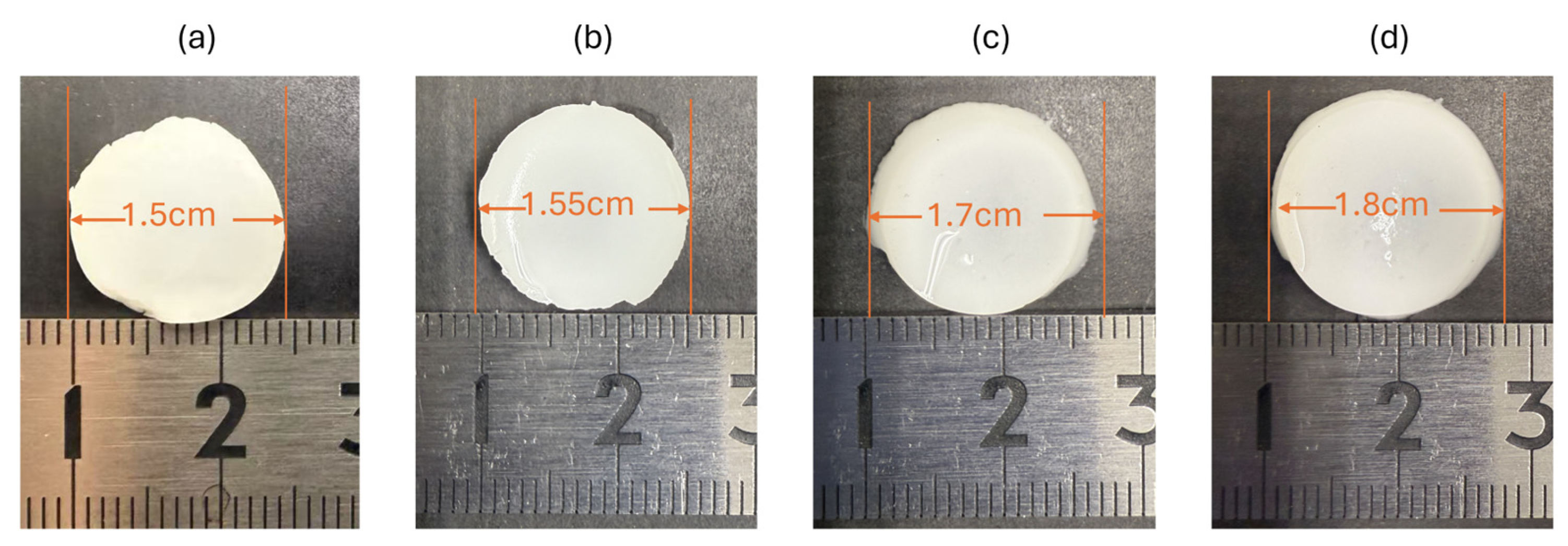
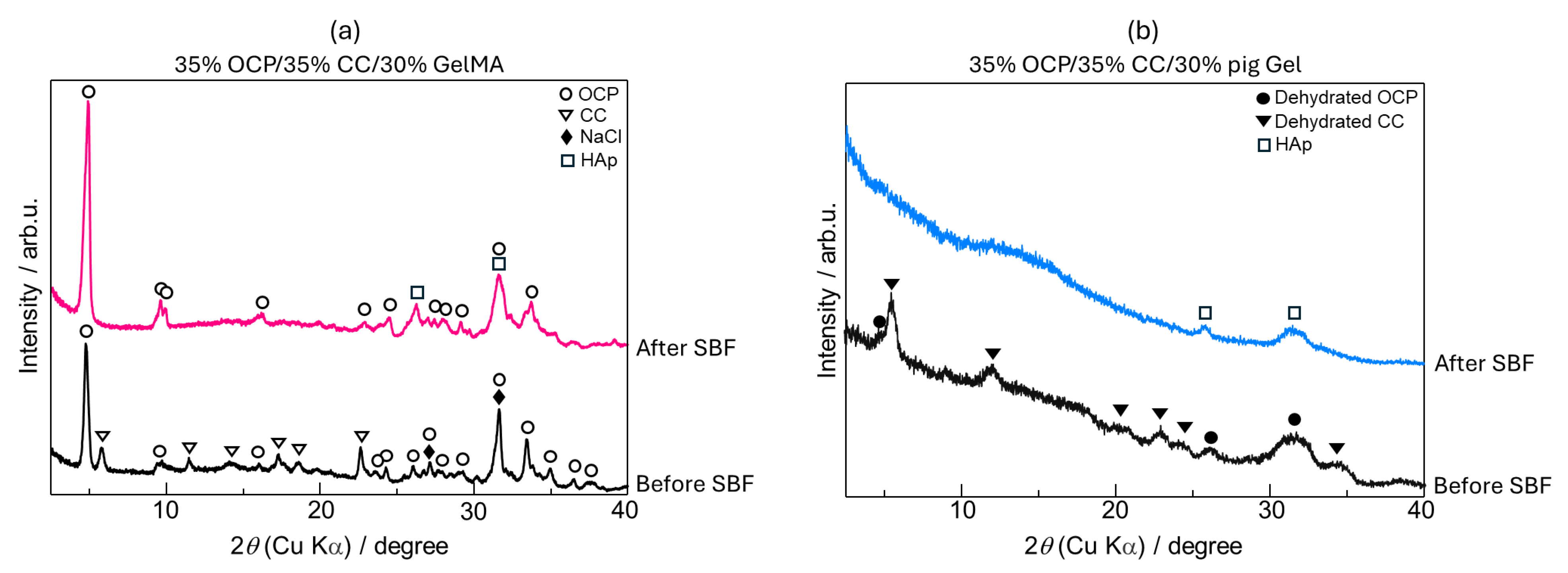
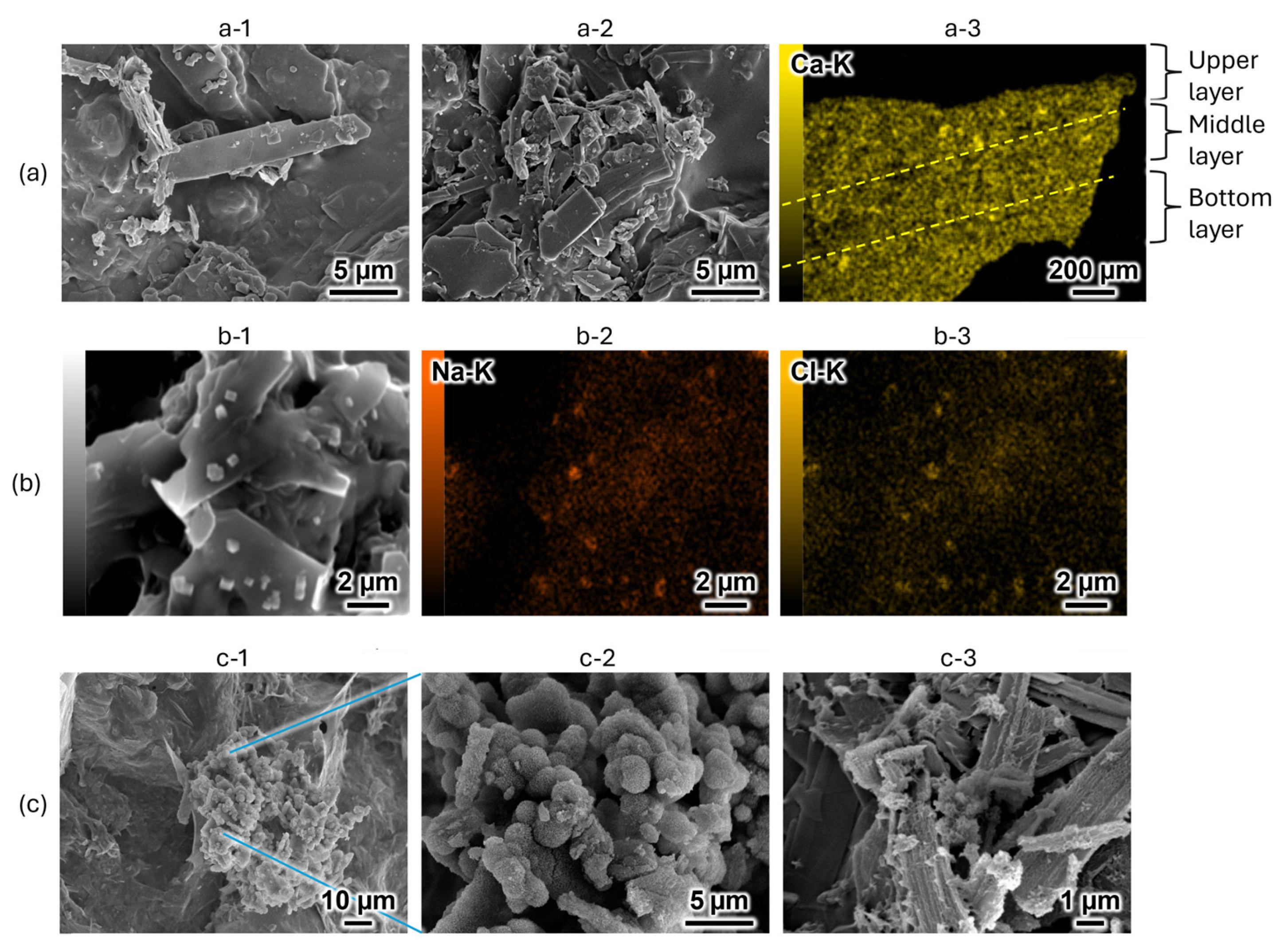
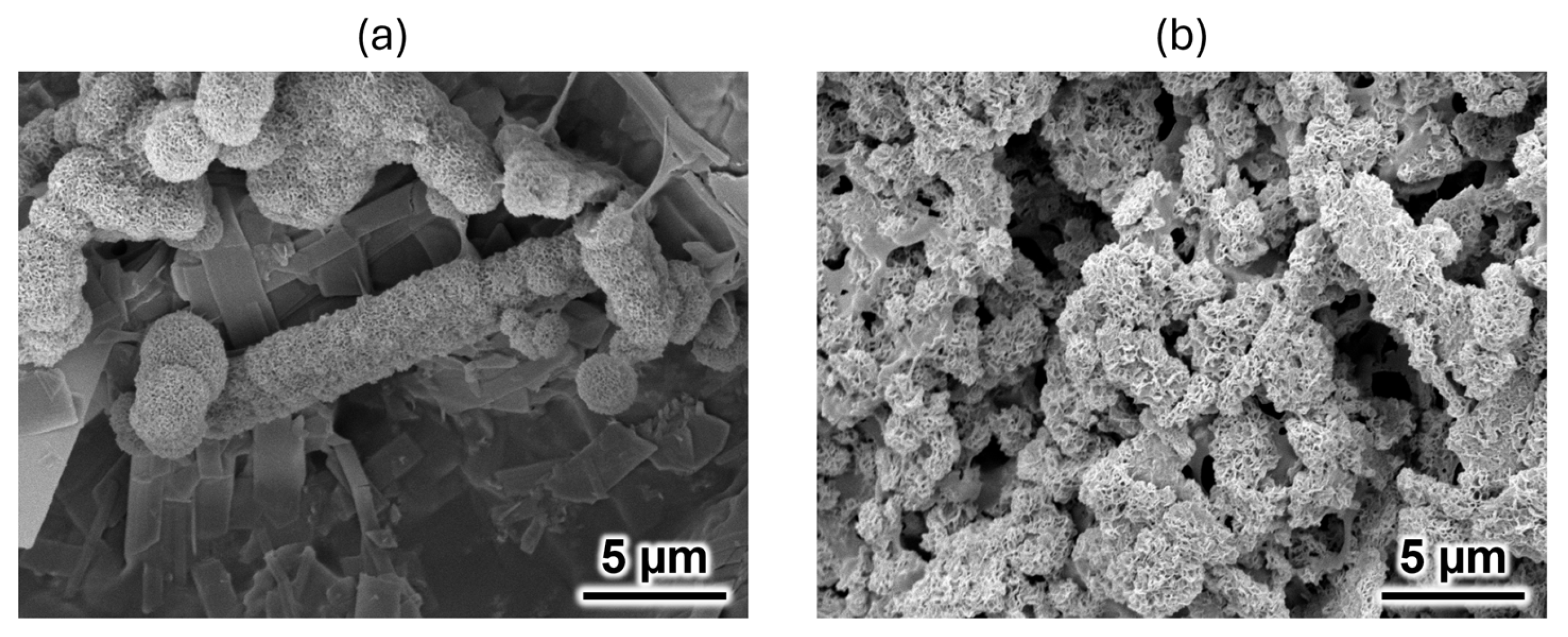
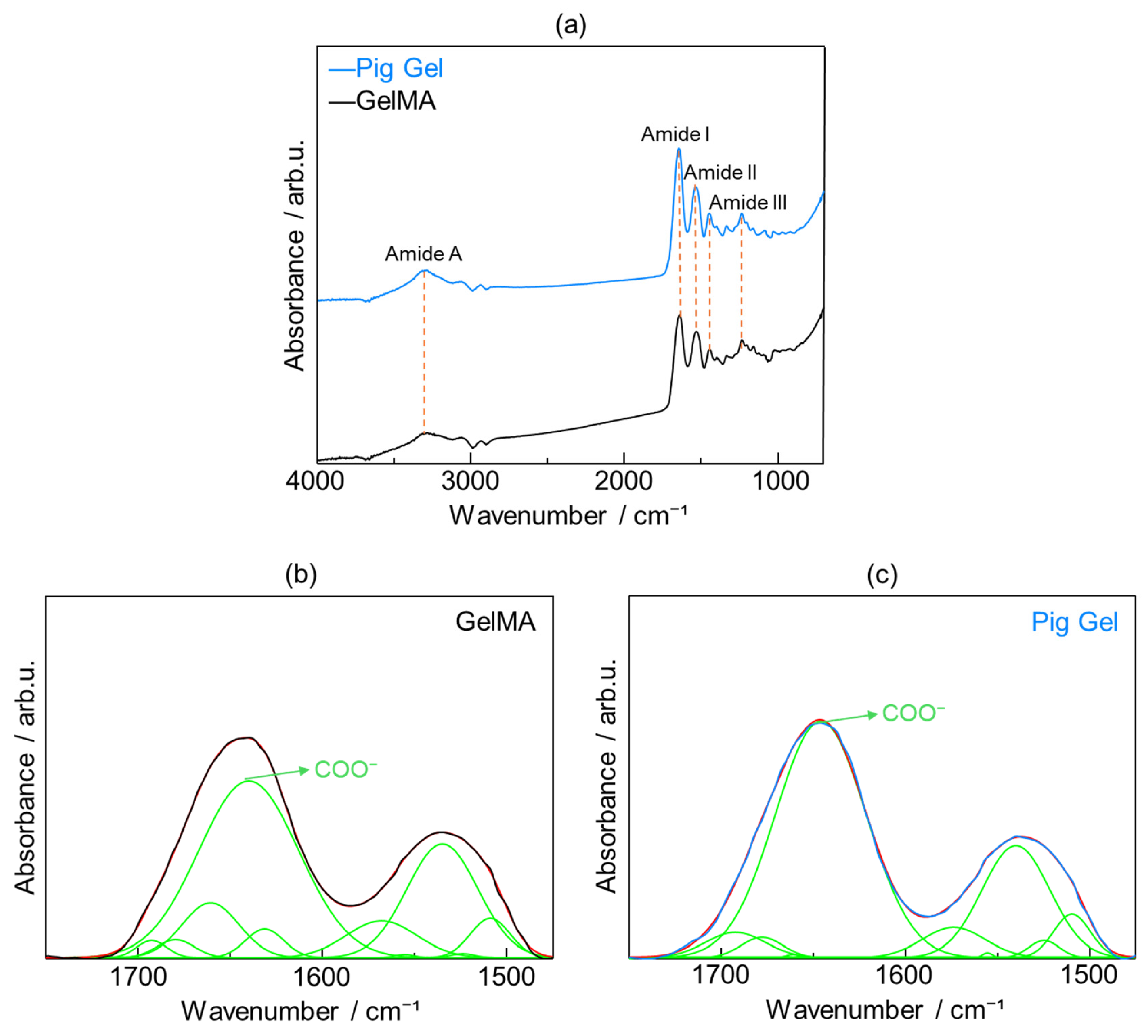
| Volumetric Ratio (v/v) of LAP Photoinitiator in GelMA | Blue Light Exposure Time (min) | Sample Status After Blue Light Exposure |
|---|---|---|
| 0.02 | 2 | Fluid |
| 4 | Fluid | |
| 0.06 | 1 | Fluid |
| 1.5 | Fluid | |
| 0.08 | 1 | Fluid |
| 1.5 | Upper side gelled Bottom side fluid | |
| 0.1 | 1 | Fluid |
| 1.5 | Upper side gelled Bottom side fluid | |
| 2 | Upper side gelled Bottom side fluid | |
| 2.5 | Both sides gelled |
Disclaimer/Publisher’s Note: The statements, opinions and data contained in all publications are solely those of the individual author(s) and contributor(s) and not of MDPI and/or the editor(s). MDPI and/or the editor(s) disclaim responsibility for any injury to people or property resulting from any ideas, methods, instructions or products referred to in the content. |
© 2025 by the authors. Licensee MDPI, Basel, Switzerland. This article is an open access article distributed under the terms and conditions of the Creative Commons Attribution (CC BY) license (https://creativecommons.org/licenses/by/4.0/).
Share and Cite
Wang, Y.; Yokoi, T.; Shimabukuro, M.; Kawashita, M. Octacalcium Phosphate/Calcium Citrate/Methacrylated Gelatin Composites: Optimization of Photo-Crosslinking Conditions and Osteogenic Potential Evaluation. Int. J. Mol. Sci. 2025, 26, 6889. https://doi.org/10.3390/ijms26146889
Wang Y, Yokoi T, Shimabukuro M, Kawashita M. Octacalcium Phosphate/Calcium Citrate/Methacrylated Gelatin Composites: Optimization of Photo-Crosslinking Conditions and Osteogenic Potential Evaluation. International Journal of Molecular Sciences. 2025; 26(14):6889. https://doi.org/10.3390/ijms26146889
Chicago/Turabian StyleWang, Yuejun, Taishi Yokoi, Masaya Shimabukuro, and Masakazu Kawashita. 2025. "Octacalcium Phosphate/Calcium Citrate/Methacrylated Gelatin Composites: Optimization of Photo-Crosslinking Conditions and Osteogenic Potential Evaluation" International Journal of Molecular Sciences 26, no. 14: 6889. https://doi.org/10.3390/ijms26146889
APA StyleWang, Y., Yokoi, T., Shimabukuro, M., & Kawashita, M. (2025). Octacalcium Phosphate/Calcium Citrate/Methacrylated Gelatin Composites: Optimization of Photo-Crosslinking Conditions and Osteogenic Potential Evaluation. International Journal of Molecular Sciences, 26(14), 6889. https://doi.org/10.3390/ijms26146889







